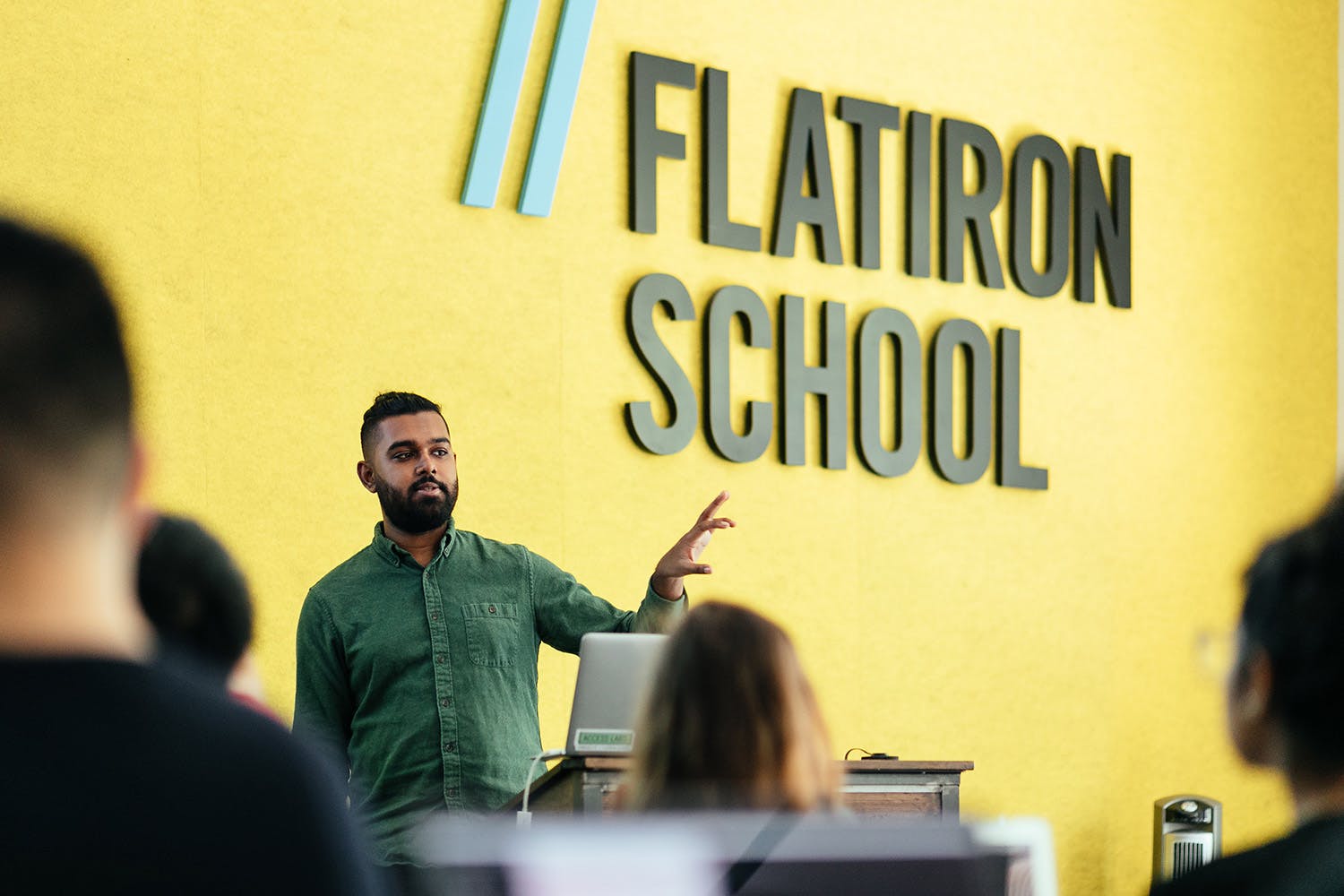How Our Teachers Combine Expertise and Passion to Make Learning Effective

Our teachers are at the very heart of our mission at Flatiron School and are instrumental to our goal of helping students of all backgrounds pursue a better life through education.
Our teachers are at the very heart of our mission at Flatiron School and are instrumental to our goal of helping students of all backgrounds pursue a better life through education. For Teacher Appreciation Week, we want to highlight what makes our teachers and curriculum so special—this week and all year round.
Dedication, passion, and expertise
Flatiron School teachers are industry professionals who want to become better teachers
Teachers provide guidance, feedback, training, and set clear expectations. We help students change their lives through tech and that requires teachers who have a deep passion for this mission. Across our in-person and online campuses, our passionate, committed teachers bring this change to life, our teachers represent the very best the tech industry has to offer. Soundarya R., for example, was leading a team of developers at Microsoft before becoming the Lead Software Engineering Instructor at Flatiron School Seattle. Soundarya calls teaching her “main passion” and seeing students grow is the most rewarding part of being a teacher. “I chose Flatiron School specifically since we are geared towards helping everyone make a huge career change and shift in their lives,” she says. Our teachers are always striving to improve, Fangfang L., a Lead Data Science Instructor at our flagship NYC campus, says the feedback she received helped her become a better teacher. She received honest feedback that helped her see her strengths and areas for improvement. Great teachers combined with a great curriculum lead to great outcomes. That’s why our teachers succeed in the classroom and why our students go on to become successful software engineers, data scientists, and cyber professionals.
In the classroom
Scaffolded learning describes how a teacher helps students see connections from current to new knowledge.
Checking for understanding means making students demonstrate what they have learned in observable, measurable ways. Learning to code is a challenge for both the students and the teachers. The students are learning new skills and programming languages while teachers have to find ways to create connections between complex concepts. Instead of diving deep into coding, we first immerse students in Ruby. This approach is called scaffolded learning. We start with an accessible language that builds skills that can then be applied to new languages. A software engineer's journey from Ruby to JavaScript, is scaffolded learning in action. Going further, teachers check for understanding through code challenges or student check-ins.
Gamifying learning
A good video game teaches you as you play.
We apply this principle to make learning to code engaging and accessible. Once students see the potential of code, Flatiron School has built-in support systems that help them maintain that excitement. One way to do that is by “gamifying” the learning experience. Gamification uses principles from video games and applies them to a difficult subject. A video game teaches you the rules and how to complete a level while you’re playing. This could be done in a tutorial or an easier level early in the game. Maybe you’ll learn how to jump or how a newly introduced tool can be used to solve a puzzle. Completing a level is a satisfying experience and you’ll want to keep playing. Those principles can be applied to learning how to code. Avi Flombaum, our co-founder, built our educational platform, with that idea in mind. In a game, for example, you might fail to complete a level. Instead of starting all the way at the very beginning, the game lets you continue from a location near where you failed. You know you have to do something differently and you can focus on that problem.We take that approach when debugging code. If something goes wrong in your code it highlights the area where the error occurred. Students know that there’s something wrong and it’s up to them to figure it out and debug their code. Students have the tools to succeed and, by internalizing those lessons, you’ll be able to fix the error and move on to the next lesson or section of code. When students complete a lesson, there’s a big sense of accomplishment.
Education rooted in student outcomes
Flatiron School and our teachers succeed when our students succeed. We care deeply Part of our success in launching students careers in tech is through great teachers and an accessible yet rigorous curriculum. Flatiron School succeeds when our students succeed. That’s why we were the first bootcamp to publish independently verified jobs outcomes. On-campus or online our students have landed jobs at innovative companies across the country — to learn more about our student’s success including salary and job placement, download our full jobs report.
Disclaimer: The information in this blog is current as of April 29, 2020. Current policies, offerings, procedures, and programs may differ.



